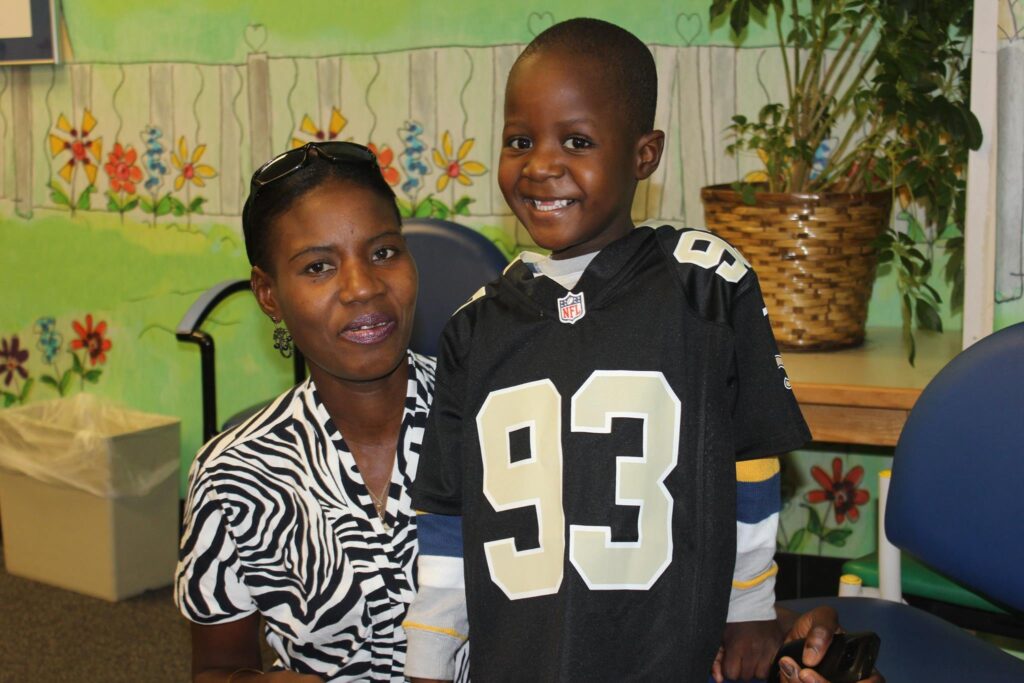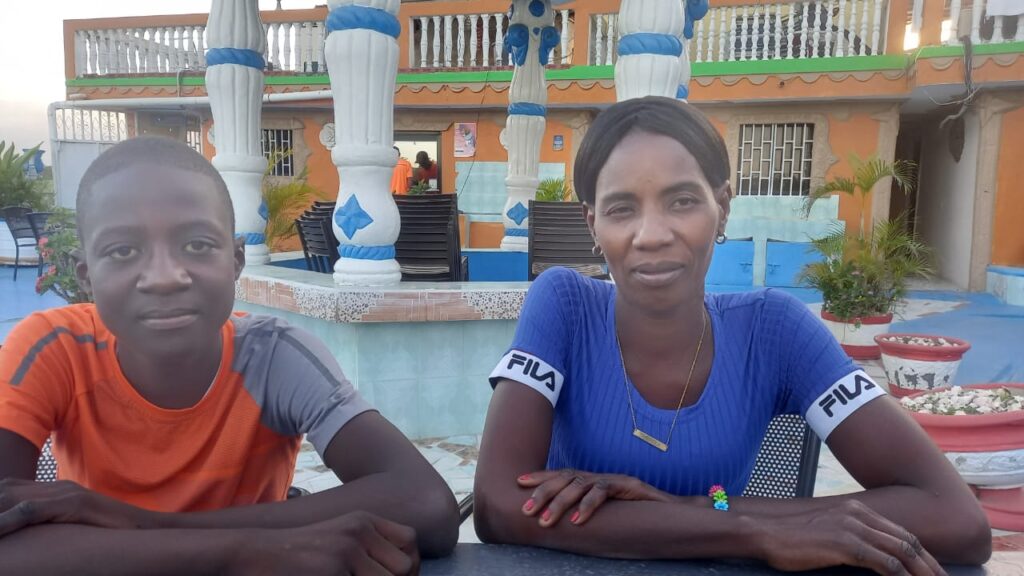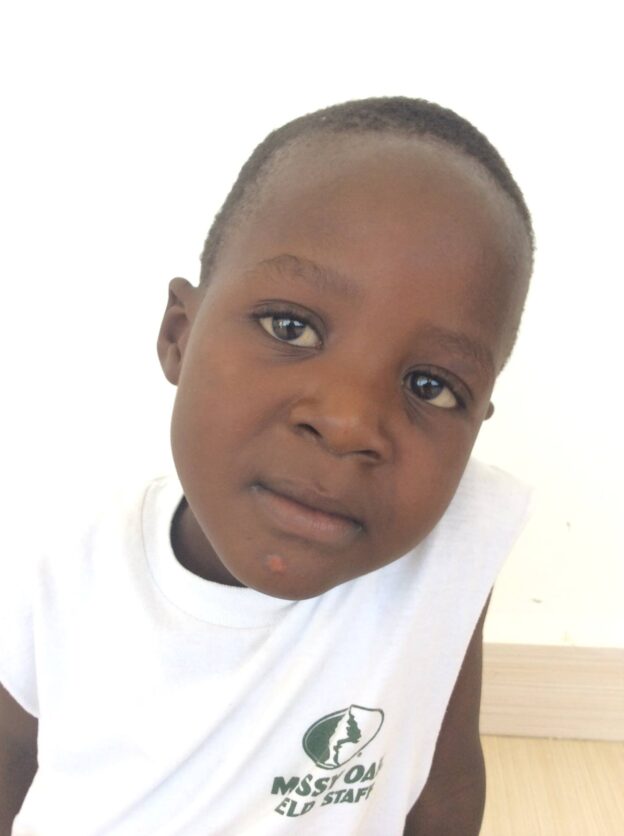Back when Elsie was in the CLM program in 2013 and 2014, the staff discovered she had a problem. She was explaining to a manager why she could not send her second son, Kervenson, to school. She said he couldn’t ever sit on the benches because of back pain. Sitting down, he would support his weight on his hands as he slumped forward, lowering his head.
Back pain in a a boy just four or five years old didn’t make sense to the CLM team. So they looked for someone who knew more than they did. At the time, the new Partners in Health/Zanmi Lasante University Hospital in Mibalè was establishing a physical therapy clinic. CLM staff called the physical therapist who was working to organize it. He suggested the team bring Kervenson to the emergency room right away. The problem probably was nothing serious, but it could be Pott Disease, tuberculosis of the spine. Better to be certain.
When the team got Kervenson to the emergency room, things became much clearer, but in a surprising way. At least they did as soon as the medical staff there took Kervenson’s vital signs. Elsie’s belief that he had backpain was mistaken. Kervenson had never been able to make his mother understand what was really wrong with him. He was not old enough to know how to explain. And she had been taking him to various clinics for years without ever finding a solution.
Kervenson’s problem was not pain, it was severe shortness of breath. This was caused, it turned out, by a congenital deformation of his heart. He wasn’t getting oxygen. That showed up immediately when the university hospital nurses checked his vitals. Kervenson would need surgery.
Haiti could not offer pediatric heart surgery. But Partners in Health had an answer. They were partnering with an American organization, the Haiti Cardiac Alliance. HCA would find a hospital in the States willing to organize the operation free of charge. The CLM team would only need to help Elsie and Kervenson get the passports and visas their trip would require. That took a number of trips from Mibalè to Pòtoprens. CLM hired agents to help with the Haitian passports, and they took the pair to Haiti’s immigration office. CLM staff then went to the American consulate with Elsie and Kervenson as well.
Kervenson and Elsie went to New Orleans. They were hosted by a Haitian-American family, and Kervenson got the medical care he needed. The photo is from their time in New Orleans.

When Kervenson returned to Haiti, his life was different. He had become healthy and playful. Previously, he had been badly behaved. Elsie had always been afraid to discipline him. But she cleared up his behavioral issues in just a few months after his return.
Ten years later, he lives along the road from Mibalè to Laskawobas with Elsie and her three other boys. He’s been seeing cardiologists in Haiti every couple of years since the operation. The team from the Haiti Cardiac Alliance had always said that he might eventually need a second operation.
In the last year or so, however, it has been harder and harder to get him seen. HCA first stopped working out of the hospital in Mibalè, and Elsie would have to take him to a children’s hospital near the new American embassy in Taba instead. But the deteriorating situation in Taba had already made the trip to the hospital there seem risky even before the gang control of the route between Pòtoprens and Mibalè became dangerous.
Eventually, the CLM team contacted the Haiti Cardiac Alliance. They learned that HCA had a second partnership with a hospital in far northern Haiti. The team would just have to help Elsie make an appointment, then help with transportation. She, Kervenson, a CLM driver, and a member of the staff would spend a night at a hotel in Okap. They’d be able to return to Mibalè the next day.
Kervenson saw the cardiologist on April 2nd. By the end of the week, the HCA team had shared what seems like the best possible news. Kervenson’s heart functions normally. The lead doctor in Okap prescribed medications for intestinal parasites, but she said that the cardiologist’s report on the heart exams was good.

CLM is a graduation program. That means that it is supposed to work in a manner that enables program members to function independently after 18 months. Though the team maintains friendly relations with former members, and though many of them will continue to call their case managers occasionally for advice, the main accompaniment that Fonkoze offers ends with graduation.
But there are exceptional cases, and Fonkoze is committed to staying with members for as long as it needs to. In Elsie’s case, that meant helping her get her son to a hospital in the States and then to another, ten years later, in Milo, in northern Haiti. For others, it has meant arranging cancer treatment in the Dominican Republic or facilitating access to adaptive materials, like wheelchairs or crutches. The CLM team is ready to help its members and its former members in whatever way they need it.

I love this story!
Thanks for posting it.
Margaret
So nice to hear about Kervenson’s progress over the years. Wow, he has grown! I will never forget accompanying Kervenson and his mom from Miami to Port-au-Prince upon their return.